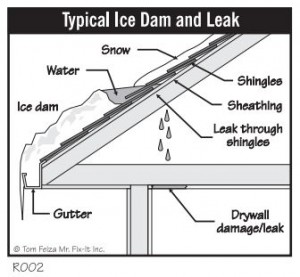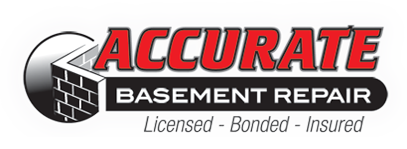 Ice dams are a problem that occurs in cold climates where there is significant snowfall. The fast melting and freezing of the snow causes intrusions and damage to roofing materials that can spread to the interior of the house. These problems can cause significant expense in home repairs. However, smart homeowners can take measures to reduce the incidence of ice dams in winter.
Ice dams are a problem that occurs in cold climates where there is significant snowfall. The fast melting and freezing of the snow causes intrusions and damage to roofing materials that can spread to the interior of the house. These problems can cause significant expense in home repairs. However, smart homeowners can take measures to reduce the incidence of ice dams in winter.
Understanding Ice Dams
An ice dam is a ridge of ice that builds up along the edge of a home’s roof. This ridge prevents snowmelt from falling off the roof. As the pooled water becomes deeper, it begins to penetrate the roofing materials and leaks into the home’s interior. This problem occurs when warm air in the attic melts the lower layers of snowfall. The melted snow slides under upper layers until it meets the overhang, where it re-freezes. The melted slush becomes thicker and thicker, creating the ice dam ridge. Generally, this problem is hidden under the snow until a leak occurs inside the home.
What To Do If Ice Dams Develop
Removing the snow from your roof can help to limit ice dams. However, getting on a pitched, slippery roof is hazardous work that should be left to experienced professionals. A long-handled snow rake can be used to remove snow from roofs safely. Ice melting cables are available, but these are unattractive and are difficult to install and maintain. A recent article in the Chicago Tribune warns about causing holes in the roof from attempting to chip off the ice. Removing ice dams on a house is a job for an experienced contractor. When warmer weather arrives, you can then implement strategies to prevent ice dam formation for the next winter.
How To Prevent Ice Dams
Homeowners can take a number of measures to help prevent ice dams on a house:
* Increase insulation in the attic – Increasing the insulation to R-38 values or more can help to prevent ice formation on the roof. This value is the equivalent of about 12 inches of fiberglass bat insulation.
* Prevent the bypass of warm air – Any opening that allows hot air to bypass into the attic area should be sealed carefully to help prevent ice dams. Ensure that exhaust fan frames, duct surfaces and soffit spaces are properly sealed.
* Increase the ventilation in the attic – Increasing attic ventilation will cool attic space and remove moisture. Ventilation should allow at least one square foot for each 300 feet of attic space. Older houses require a minimum of one square foot for each one hundred fifty feet of attic space.
Read this PDF to see how you can prevent the damage from ice dams by taking active steps to eliminate the conditions that cause them. When ice dams do occur, get professional help to remove the ice and prevent unnecessary damage to your roof and other structures.




